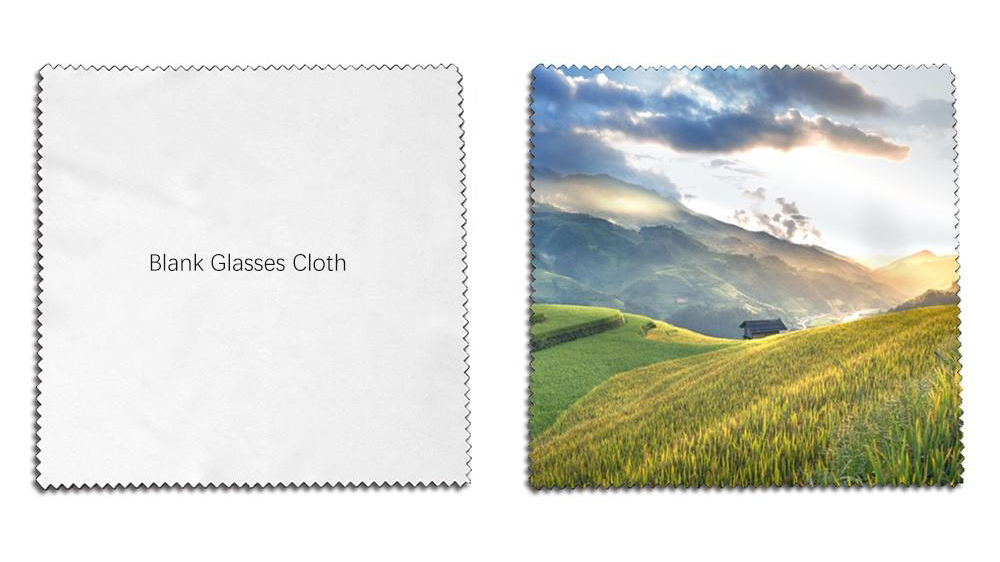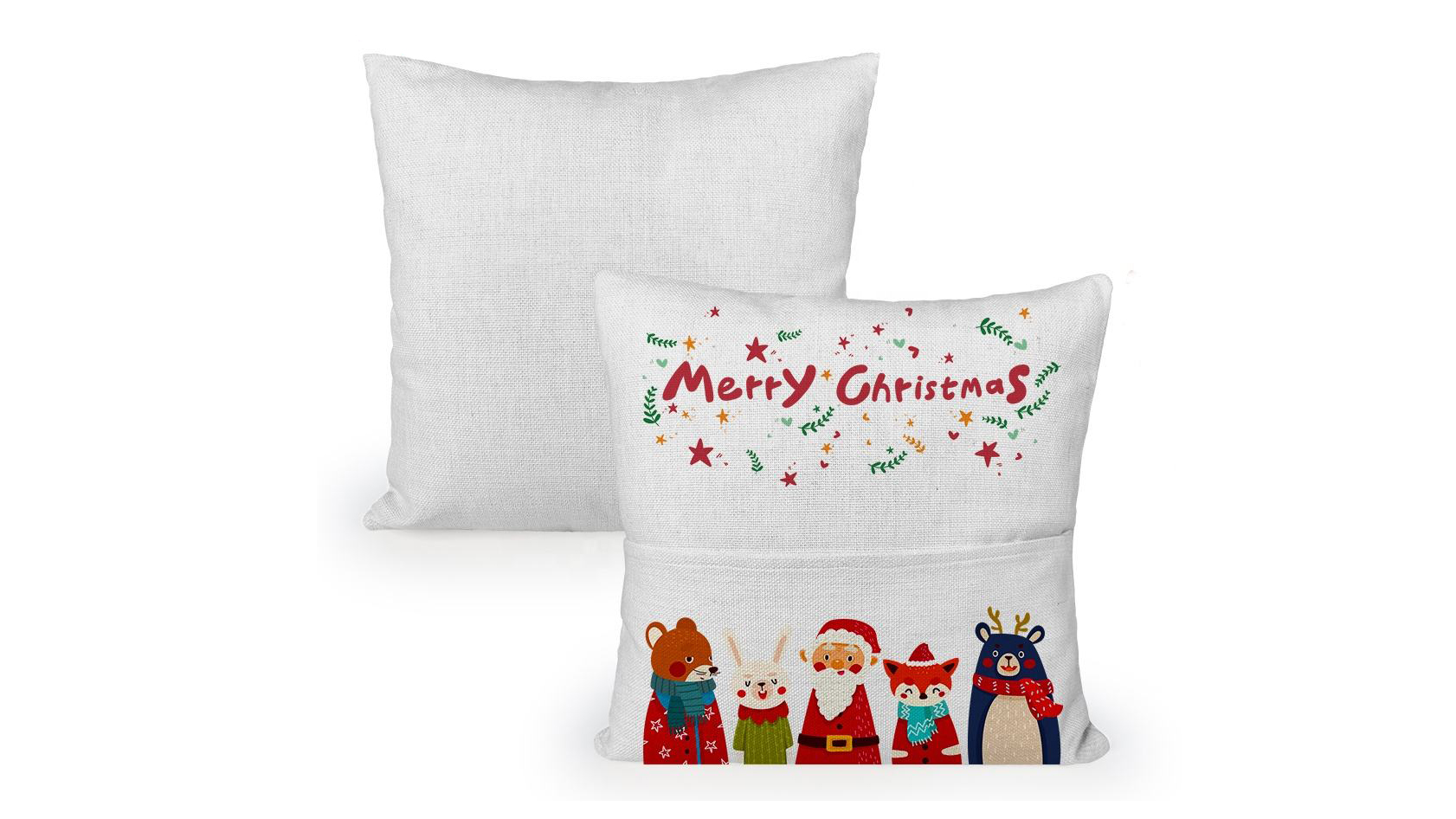
You can make bright and lasting designs for clothes, decor, and more with sublimation fabric. If you pick 100% polyester fabrics, you get the best results from dye sublimation. Many people want custom sublimation printing today, especially for sportswear, fashion, and items used to promote things. Dye sublimation lets you create custom designs that stay bright and do not fade easily. New sublimation printing makes it possible to get fast, custom products and eco-friendly choices for big brands and small businesses.
Key Takeaways
Pick 100% polyester fabric for the brightest prints. These prints last a long time and do not fade or crack easily.
La impresión de sublimación utiliza el calor para cambiar el tinte en gas. El color se profundiza en las fibras de tela. Esto hace que los diseños sean suaves y brillantes.
Este método de impresión funciona bien para ropa deportiva, moda y decoración del hogar. También es bueno para artículos promocionales. Puede personalizar completamente sus diseños.
La impresión de sublimación es ecológica. Utiliza tintas a base de agua y menos agua. Esto lo convierte en una mejor opción para las personas y las empresas.
Use la configuración correcta de presión de calor y buenas telas de poliéster. Esto te ayuda a obtener impresiones nítidas y fuertes. Las impresiones se mantienen brillantes después de muchos lavados.
Tela de sublimación
¿Qué es la tela de sublimación?
La tela de sublimación es un material especial hecho para la impresión de sublimación. La mayoría de las veces, es poliéster u otra fibra sintética. Estas telas tienen una estructura que deja que el teñir se convierta en gas cuando se calienta. El tinte luego se une con las fibras. Esto no es como la impresión regular, donde la tinta se encuentra en la parte superior. Con la impresión de sublimación, el color entra en la tela y se queda allí.
El poliéster es la mejor elección para la tela de sublimación. When you heat the fibers, they open up. The dye gets inside and locks in as it cools. This makes colors bright and even for a long time. Other synthetic fibers like nylon, rayon, and acrylic can work too. But polyester gives the best results. Cotton does not work well because the dye cannot bond with its fibers. Sometimes, cotton is blended or coated to make it work for sublimation.
Note: The U.S. Digital Textile Printing Market report says polyester fabrics used in sublimation printing resist wrinkles and scratches. This makes them a great choice for things that need to look nice and last long.
Benefits of Sublimation Fabric
Hay muchas cosas buenas sobre el uso de tela de sublimación. El mayor beneficio es que las impresiones duran mucho tiempo. El tinte se une con las fibras, por lo que los colores no se desvanecen ni se agrietan. Esto hace que la impresión de sublimación sea excelente para cosas que se lavan, se usan mucho o están al sol.
Aquí hay algunos beneficios principales de la tela de sublimación:
Colores vibrantes y duraderos: La sublimación de tinte hace diseños brillantes que se mantienen audaces. El Informe del mercado de impresión de sublimación de tinte Dice que este método mantiene los colores mejores que otros tipos.
Sensación suave y cómoda: El proceso no agrega capas adicionales. La tela se mantiene suave y suave, lo cual es bueno para ropa y artículos para el hogar.
Personalización completa: You can print any design or photo with no color limits. This makes dye-sublimation technology perfect for custom sportswear, fashion, and promo items.
Eco-Friendly Process: Sublimation printing uses water-based inks and little water. This means less waste and is better for the environment than old printing ways.
Wide Range of Uses: You can use sublimation fabric for t-shirts, jerseys, hoodies, curtains, pillowcases, bags, hats, and more. Brands like JOOS Prints and Bauldry Botanical use this for sportswear and home decor.
Science explains why sublimation fabric works so well. Dye-sublimation technology uses heat to turn dye into gas. The dye goes into the polyester fibers and bonds at a tiny level. This makes the color part of the fabric. This chemical process keeps prints sharp, even, and strong. Research shows sublimation printing works best on polyester or coated materials. You get the brightest and longest-lasting results if you use the right fabric and heat press settings.
Tip: Always pick high-quality polyester fabric for your sublimation printing. This gives you the best color, strength, and look.
Sublimation Printing Process
How Dye Sublimation Works
You can make colorful and lasting designs with the sublimation printing process. This method uses heat, pressure, and time to put your design on fabric or other things. First, you print your digital design onto sublimation transfer paper. You need a sublimation printer and sublimation ink for this. These inks are special because they turn into gas when heated. This is important for the dye sublimation process.
Here is an easy step-by-step guide to the sublimation printing process:
Print your design on sublimation transfer paper. Use a sublimation printer with sublimation ink.
Put the printed transfer paper on the fabric or item you want to decorate. Hold it in place with heat-resistant tape so it stays still.
Use a heat press to add heat and pressure. The La temperatura suele ser entre 350 ° F y 420 ° F. Para los colores más brillantes, configure la prensa de calor de 380 ° F a 420 ° F.
El calor cambia la tinta de sublimación en un gas. Este gas entra en las fibras de la tela en un pequeño nivel.
Cuando se realice la presión de calor, deje que el artículo se enfríe. El gas se convierte en un tinte sólido, ahora bloqueado dentro de la tela.
Obtiene una imagen a todo color que no se agrietará, se desvanecerá o pelará.
Tip: Siempre mire las instrucciones del fabricante para el momento y la presión adecuados. Cada tela o artículo puede necesitar una configuración diferente para una buena sublimación.
La técnica de impresión de sublimación le brinda imágenes nítidas y detalladas. Puedes usarlo para camisetas, ropa deportiva, pancartas y más. El proceso tiene pasos como impresión, grabación, prensa y enfriamiento. Cada paso es importante para grandes resultados de sublimación.
Por qué las telas 100% poliéster son las mejores
Obtiene los mejores resultados de la impresión de sublimación en la tela cuando usa telas de poliéster al 100%. Las fibras de poliéster se abren cuando se calientan. Esto permite que el tinte de sublimación entre y se une a un pequeño nivel. Este vínculo hace que los colores brillen y la imagen dure mucho tiempo. La impresión de sublimación de tinte en el poliéster le ofrece imágenes que se mantienen agradables después de muchos lavados y mucho uso.
Las mezclas de alto poliéster también pueden funcionar, pero el color puede no ser tan brillante como con el poliéster puro. Si usa algodón o artículos sin un recubrimiento de poli, la tinta de sublimación no puede unirse bien. El diseño puede parecer desvanecido o lavar rápidamente. Las fibras de algodón no se abren como poliéster, por lo que el tinte se encuentra en la parte superior y no dura.
Tipo de tela | Vitalidad de color | Durabilidad | Lo mejor para la impresión de sublimación |
|---|---|---|---|
100% poliéster | ⭐⭐⭐⭐⭐ | ⭐⭐⭐⭐⭐ | Sí |
Mezclas de alto poliéster | ⭐⭐⭐⭐ | ⭐⭐⭐⭐ | Sí |
Algodón | ⭐ | ⭐ | No |
Artículos no recubiertos | ⭐ | ⭐ | No |
Note: Para la mejor impresión de sublimación, siempre elija telas o artículos de poliéster 100% con un recubrimiento de polímero especial. Esto ayuda a la sublimación de la tinta de la tinta y mantiene la imagen brillante y fuerte.
La impresión de sublimación en la tela funciona mejor cuando sigue los pasos correctos y usa los materiales correctos. Puede obtener resultados de alta calidad y duraderos con la impresora de sublimación adecuada, tinta de sublimación y tela de poliéster. El proceso de sublimación de tinte le permite hacer productos personalizados que se ven geniales y duran mucho tiempo.
Usos de ropa

Ropa deportiva y ropa activa
La impresión de sublimación es muy común en la ropa deportiva y la ropa activa. De esta manera, obtienes diseños brillantes y audaces que duran mucho tiempo. Los colores y los logotipos de su equipo se mantienen fuertes después de muchos lavados. Las telas de poliéster son las mejores para la impresión de sublimación Porque se unen con la tinta. Esto hace que las impresiones se resistan a decolorarse, agrietarse y pelar.
Las prendas de poliéster mantienen su color y forma después de muchos lavados.
La impresión de sublimación le ofrece telas que eliminan el sudor y dejan entrar el aire. Te mantienes seco y cómodo cuando te mueves.
Las mezclas de poliéster-spandex hacen que su ropa sea elástica y flexible. Esto ayuda a que su ropa activa se ajuste bien y mantiene las impresiones luces bien.
Las telas especiales como Dri-Fit Jersey y Serena Jersey se secan rápidamente y se sienten suaves. También muestran impresiones muy bien.
El poliéster liviano (100-180 GSM) absorbe tinta de sublimación de tinte. Esto hace que sus diseños se destaquen.
El tinte entra en la tela, no solo en la parte superior. Esto ayuda a su ropa a durar más.
Puede usar la impresión de sublimación para muchos estilos de ropa deportiva. Estos incluyen camisas ajustadas y camisetas sueltas.
Lave su ropa al revés y deje que se sequen al aire. Esto mantiene la impresión y la tela fuertes.
Tip: Elija el 100% de poliéster para la impresión de sublimación más brillante y fuerte en ropa deportiva y ropa activa.
Moda y uniformes
La impresión de sublimación cambia la forma en que las personas diseñan moda y uniformes. El mercado de la ropa sublimada de tinte está creciendo rápidamente. En 2024, fueron de $ 4.5 mil millones. Los expertos piensan que alcanzará los $ 8.2 mil millones para 2033. Este crecimiento ocurre porque las personas quieren ropa personalizada y diseños geniales. También quieren prendas de alto rendimiento. La sublimación de tinte le permite realizar impresiones detalladas y coloridas en mezclas de poliéster y sintéticos. Puede hacer piezas de moda especiales, uniformes de moda y ropa ecológica con poliéster reciclado y tintas a base de agua.
Designers use sublimation printing to make small batches of great clothes. You see this in sports uniforms, work clothes, and fashion collections. New technology, like AI and custom-fit patterns, helps clothes fit better and look stylish. Dye sublimation also helps the planet, so you can pick greener options for your closet or business.
When you use sublimation printing for fashion and uniforms, you get strong, comfy, and eye-catching clothes that stand out.
Decor and More

Home Textiles and Wall Art
Sublimation printing lets you make cool home textiles and wall art. You can put custom designs on pillows, blankets, curtains, and even upholstery. The colors stay bright for a long time. Many people want special home décor now. You can print family photos, art, or patterns on fabric for your living room or bedroom.
The market for home décor with sublimation printing is getting bigger. More people want custom wall art and textiles. Cities are growing, and people have more money to spend. In Asia-Pacific, fabric production was 4.81 billion meters in early 2024. The dye sublimation printing market might reach $28.98 billion by 2030. Companies are buying better machines to keep up with the need for home textiles.
Application | Key Trends | Growth Drivers |
|---|---|---|
Home Décor | Custom wall art, textiles, upholstery | Urbanization, rising incomes |
You can also use sublimation printing for banners and signs. This works for soft and hard things with polymer coatings. The images look sharp and do not fade, even in sunlight. Many people pick sublimation-printed wall art instead of wallpaper. It is easier to change and take down.
Tip: Try your fabric before printing. Polyester and blends work best for home décor.
Bags, Gifts, and Promotional Items
Sublimation printing gives you lots of choices for bags, gifts, and promo items. You can make tote bags, mugs, keychains, and more. Many businesses use this to make special products for customers. You can print logos, names, or photos on each item.
Tote bags come in many shapes and sizes. You can use them for groceries, school, or travel.
Materials include polyester, vegan leather, mesh, and nylon. Each one looks and feels different.
You can match your bag design to your brand or event. Many companies pick eco-friendly choices.
Sublimation printing also works for mugs, coasters, phone cases, and ornaments. You get prints that do not fade or wear out fast. This way, you can make gifts and keepsakes just for someone. Many people like to give custom photo mugs or plaques for special days.
Sublimation printing helps you make strong, colorful, and low-cost products. You can meet the need for custom items in many businesses.
Fabric Compatibility
Best Fabrics for Sublimation Printing
You get great results with sublimation printing if you pick the right fabric. Polyester is the best because it bonds well with sublimation ink. You can also use fabrics with 98% or 96% polyester for good color and strength. Many people like recycled polyester because it is eco-friendly and works well. Sublimation printing on recycled polyester is popular for sportswear and home décor. You can also try bamboo, satin, linen, rayon, modal, canvas, and sequin fabrics. These materials help you make bright and lasting designs.
Suitable fabrics for sublimation printing:
100% polyester
Fabrics with 98% polyester
Fabrics with 96% polyester
High-polyester blends (at least 65-70%)
Bamboo
Satin
Linen
Rayon
Modal
Canvas
Sequin
Tip: Always look at the fabric label before you start. Fabrics with more polyester give you the brightest colors.
Fabrics and Materials to Avoid
Some fabrics do not work well with sublimation printing. You should not use 100% cotton or dark fabrics. Sublimation ink does not bond with cotton fibers. If you use cotton, your images will look faded or wash out fast. Sublimation printed cotton will not last long. Dark fabrics also hide the design because the ink is see-through.
Here is a table that shows how cotton and polyester are different:
Property | Algodón | Polyester |
|---|---|---|
Moisture Regain | Good | Poor |
Thermal Protection | Good | Poor |
Smoothness | Poor | Very Good |
Lustre | Poor | Very Good |
Crease Recovery | Poor | Very Good |
Uniformity | Poor | Good |
Polyester gives you smooth, shiny, and strong prints. Cotton does not bond with sublimation ink, so you should not use it. Non-poly-coated ceramics and dark fabrics also do not work.
Tips for Best Results
You can get the best from sublimation printing by following some tips. Start by picking the right sublimation printer and sublimation ink. Use a printer made for sublimation or a converted inkjet printer. Print on the correct side of the sublimation paper and cut it to fit your design. Set your heat press to 375°F to 400°F and press for 40-75 seconds with light to medium pressure. Pre-press your fabric to get rid of moisture and wrinkles. Hold the transfer paper in place with heat-resistant tape. Always use fabrics with lots of polyester or a sublimation coating. Sublimation printing on recycled polyester gives you bright and eco-friendly results.
Keep your workspace neat and store your sublimation ink in airtight containers away from sunlight. Try new fabric blends and change your method to get the best results.
You can make bright and long-lasting designs with sublimation printing. Pick 100% polyester or blends with lots of polyester for the best colors. The market for these items is getting bigger. It was $5.42 billion in 2024 and may double by 2033. Many people want special and earth-friendly things that show who they are. You can try making your own custom items or ask an expert for help.
Benefit | Why It Matters |
|---|---|
Bright, durable prints | Colors stay strong after many washes |
Eco-friendly process | Makes less waste and helps the planet |
Personalización | Shows your style or your brand |
FAQ
What is the best fabric for sublimation printing?
You get the best results with 100% polyester fabric. Polyester lets the dye bond deep inside the fibers. This makes your prints bright and long-lasting.
Can you sublimate on cotton?
You cannot sublimate directly on cotton. The dye does not bond with cotton fibers. You need a polyester coating or a high-polyester blend for good results.
How do you care for sublimated items?
Lave sus artículos sublimados al revés en agua fría. Ségalos al aire o use una configuración de bajo calor. Esto mantiene sus impresiones con un aspecto nuevo.
¿Qué productos puedes hacer con la tela de sublimación?
Puedes crear:
Camisetas y camisetas
Almohadas y mantas
Bolsas y sombreros
Pancartas y arte de pared
La sublimación funciona en muchos productos a base de poliéster.

